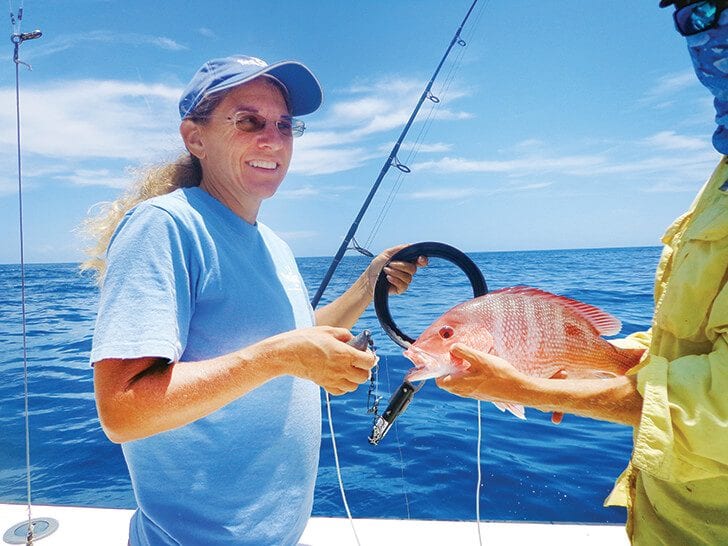
By Melissa Crouch:
If you’ve ever gone saltwater fishing in Florida, you are well aware of the variety of species that call these waters home. A popular target for Florida’s saltwater anglers are reef fish such as snappers and groupers. These species are fun to catch and provide a great bottom-fishing experience for both novice and veteran anglers.
There’s nothing like dropping a bait to the bottom and getting a bite. The excitement of what this mystery fish could be begins to build as it is reeled up off the bottom. But what if the mystery fish is out-of-season and must be released?
If the catch shows signs of barotrauma, specific steps should be taken to provide the best chance of survival before a fish is returned to the water. Bulging eyes, a bloated belly, distended intestines or the stomach protruding from the mouth are all signs of barotrauma, which occurs when fish with a swim bladder are pulled up from deep water, typically depths greater than 50 feet. The change in pressure can cause gasses in the swim bladder to expand and, in some cases, cause it to burst. When a fish suffering from barotrauma is released, it is unable to swim back down, which makes survival and avoiding predators difficult.
Descending devices might increase a fish’s chance of survival. Descending devices bring fish back down to a depth where increased pressure from the water will recompress swim bladder gasses and allow the fish to swim away.
Descending devices fall into three categories: mouth clamps, inverted hooks and fish elevators. Mouth clamps attach to a rod and reel or handline, clamp to the mouth of the fish and use a pressure sensor to release the fish automatically at a predetermined depth. Or, a weighted spring release mechanism is used to release the fish when an angler gives a sharp tug on the line.
Inverted hooks work similarly to mouth clamp devices, but are inserted through the original hole made by the hook. Once the fish is deep enough to reverse the effects of barotrauma, the angler reels in the line and the fish swims away.
A third option is the fish elevator, an inverted container, such as a milk crate, with a rope attached to the top and weights on the bottom. This creates a bottomless cage that brings fish back down to capture depth.
Anglers should choose the device and method they are most comfortable with, that best fits the situation at hand and that minimizes the amount of time the fish is out of the water. Descending devices should only be used when fish show signs of barotrauma and cannot swim back down on their own. It is essential to work quickly when using these tools and return the fish to the water as soon as possible.
To learn more about proper fish handling and catch-and-release methods, visit MyFWC.com/Fishing and click on “Saltwater Fishing,” “Recreational Regulations” and “Fish Handling.”